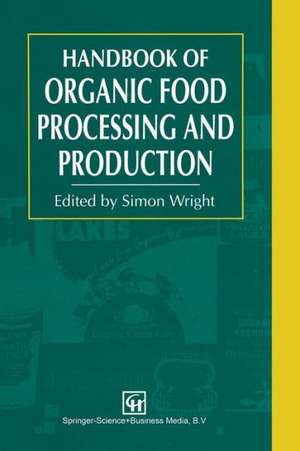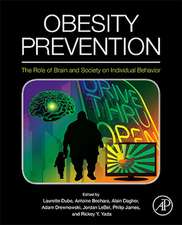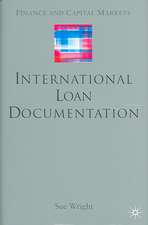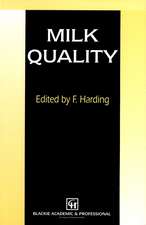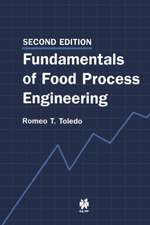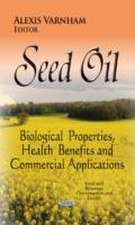Handbook of Organic Food Processing and Production
Autor S. Wrighten Limba Engleză Paperback – 23 oct 2012
Preț: 384.31 lei
Nou
Puncte Express: 576
Preț estimativ în valută:
73.54€ • 78.64$ • 61.31£
73.54€ • 78.64$ • 61.31£
Carte tipărită la comandă
Livrare economică 17 aprilie-01 mai
Preluare comenzi: 021 569.72.76
Specificații
ISBN-13: 9781461358770
ISBN-10: 1461358779
Pagini: 228
Ilustrații: XV, 207 p.
Dimensiuni: 155 x 235 x 12 mm
Greutate: 0.33 kg
Ediția:1994
Editura: Springer Us
Colecția Springer
Locul publicării:New York, NY, United States
ISBN-10: 1461358779
Pagini: 228
Ilustrații: XV, 207 p.
Dimensiuni: 155 x 235 x 12 mm
Greutate: 0.33 kg
Ediția:1994
Editura: Springer Us
Colecția Springer
Locul publicării:New York, NY, United States
Public țintă
ResearchCuprins
1 Introduction.- 1.1 Introduction.- 1.2 Organic farming.- 1.3 Conversion.- 1.4 Conservation grades.- 1.5 The cost of organic farming.- 1.6 How subsidies make organic farming uncompetitive.- 1.7 How does it work?.- 1.8 First World agriculture and Third World poverty.- 1.9 Fair trade and organic farming.- 1.10 History of the UK organic movement.- 1.11 Market size and share.- 1.12 Producers, processors and marketeers.- References.- 2 UK and European Community (EC) legislation.- 2.1 Introduction.- 2.2 Situation in the UK and the EC prior to EC legislation.- 2.3 Development of EC legislation.- 2.4 Summary of EC legislation as at 30 October 1993.- 2.5 Structure of the EC legislation.- 2.6 Future developments on standards.- 2.7 Aid for organic farming.- 2.8 Overview.- References.- 3 Organic certification and the importation of organically produced foods.- 3.1 Introduction.- 3.2 Organic certification and its importance.- 3.3 Organic standards and certification protocol.- 3.4 Development of organic certification as a legal requirement.- 3.5 The structure of organic certification schemes in the EU.- 3.6 Certification protocol.- 3.7 Imports of organically produced foods.- 3.8 The dynamics of organic certification.- Acknowledgement.- References.- 4 Fruit and vegetables.- 4.1 Introduction.- 4.2 Market structure and history.- 4.3 Availability.- 4.4 Growing systems compared.- 4.5 Types of market.- 4.6 Imports.- 4.7 Market overview.- 4.8 The future.- 5 Cereal products.- 5.1 Principal crops.- 5.2 Producing organic cereals.- 5.3 Processing requirements.- 5.4 Existing products.- 5.5 Summary.- 6 Organic meat and meat products.- 6.1 Introduction.- 6.2 Legislation.- 6.3 Organic meat production.- 6.4 Processing and marketing organic meat.- 6.5 Some practical processing and marketing considerations.- Acknowledgement.- References.- 7 Dairy products.- 7.1 Introduction.- 7.2 The significance of milk.- 7.3 Milk quality.- 7.4 Animal husbandry on an organic dairy farm.- 7.5 Liquid milk processing.- 7.6 Cheese production.- 7.7 Yogurt making.- 7.8 Cream and butter production.- 7.9 Ice-cream and frozen yogurt production.- 7.10 Marketing organic dairy products.- 7.11 Market development.- 7.12 Types of organic dairy units.- 7.13 Legislation.- 7.14 Summary.- 8 Other organic processed foods.- 8.1 Introduction.- 8.2 Organic spreads.- 8.3 Organic juices and grain syrups.- 8.4 Organic sauces and pickles.- 8.5 Organic ready meals.- 8.6 Organic snack items.- 8.7 Organic oils, vinegar and soya sauce.- 8.8 Dried organic products.- References.- 9 Alcoholic drinks.- 9.1 Introduction.- 9.2 Consumer demand for organic wines, beers and spirits.- 9.3 Problems with non-organic alcohol.- 9.4 The producers.- 9.5 The merchants.- 9.6 The future.- Appendix: Commonly used additives in wine-making.- Further reading.- 10 The USA perspective.- 10.1 Market overview.- 10.2 Legislation.- 10.3 Future trends.- References.- 11 Directory of organic organisations.- 11.1 UK.- 11.2 International.- 11.3 Trade shows.- 11.4 Other useful addresses.- Further reading.- General index.- Index of company names.- Index of organic legislation and regulations.
